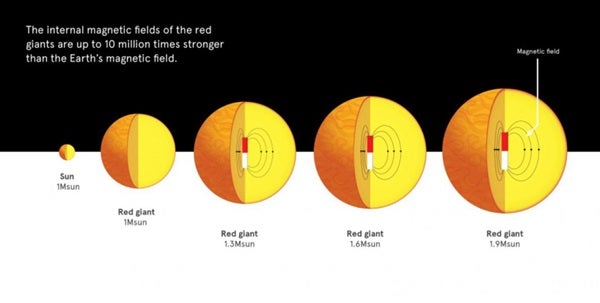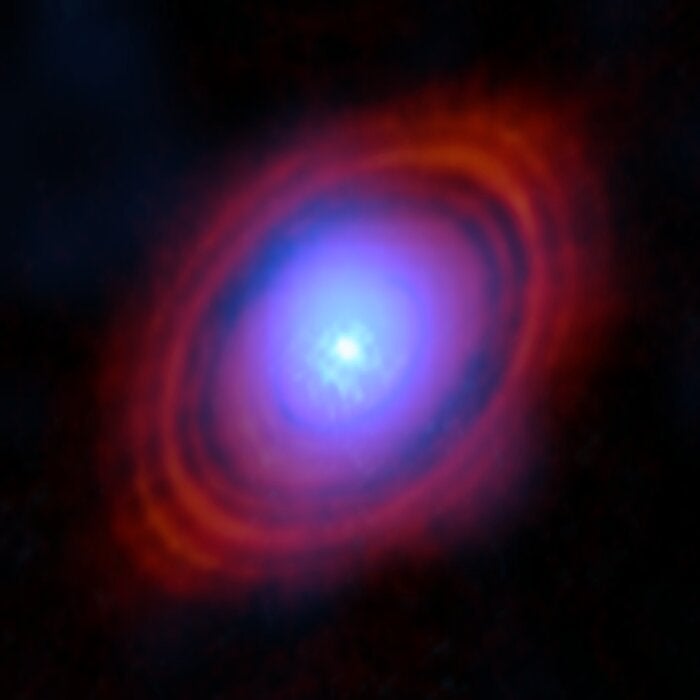Using data from NASA’s Kepler mission and based on previous work by researchers at Caltech, the team found that stars only slightly more massive than the Sun have internal magnetic fields up to 10 million times that of Earth, with important implications for evolution and the ultimate fate of stars.
Because these magnetic fields hide deep within a star’s interior, it was previously believed that only a small percentage of stars hosted strong internal magnetic fields. Consequently, the phenomenon has been left out of current models of stellar evolution.
“These findings represent the first ever detections of internal stellar magnetic fields in a large sample of stars, and the results are extraordinary. The prevalence of magnetic fields in stars slightly more massive than the Sun was unexpected and demonstrates that magnetic fields are robust features of stars that influence their evolution and their ultimate demise,” said Jim Fuller from Caltech in Pasadena, California.
The research is based on previous work led by Caltech and the University of California, Santa Barbara, which found that measurements of stellar oscillations, or sound waves, inside stars could be used to infer the presence of strong magnetic fields. Most stars “ring” like a bell due to sound waves bouncing back and forth in their interiors.
This latest research used a technique called asteroseismology, which can probe beneath the surface of a star, to measure these stellar oscillations. By looking at a large number of evolved versions of our Sun — so-called red giants — the team found that certain oscillation frequencies were missing in over half of the stars more massive than the Sun because they were suppressed by strong magnetic fields in the stellar cores. However, strong magnetic fields were found to be completely absent in red giants with the same mass as the Sun. This is significant because magnetic fields can alter the physical processes that take place in the core, including internal rotation rates, which affects how stars grow old.
“This study focused on red giants, but in the near future, we hope to measure magnetic fields in different types of stars — helium-burning stars and stars in clusters — to gain a better understanding of the coupled evolution of stars and their internal magnetic fields,” Fuller said.









